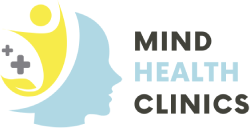What are the diagnostic features of PTSD?
Post-Traumatic Stress Disorder (PTSD) is a complex mental health condition triggered by experiencing or witnessing a traumatic event. The core features of PTSD include intrusive memories, avoidance, negative alterations in mood and cognition, and heightened arousal. Individuals with PTSD often experience recurrent, involuntary, and distressing memories of the trauma, which can include flashbacks or nightmares that feel vividly real. This leads to significant avoidance behaviors where the person may steer clear of reminders or situations related to the trauma, or have trouble remembering aspects of the event. Negative alterations in mood and cognition can manifest as persistent negative thoughts about oneself or others, feelings of hopelessness, or a sense of detachment from others. Additionally, there is often a heightened state of arousal, which can involve hypervigilance, exaggerated startle responses, irritability, or difficulty sleeping. According to the DSM-5, a diagnosis of PTSD requires the presence of symptoms from each of the four clusters—intrusion, avoidance, negative alterations in mood and cognition, and arousal—that persist for more than a month and cause significant distress or impairment in daily functioning. The diagnosis often involves assessing the severity and duration of symptoms, and ruling out other potential causes or conditions that could be contributing to the individual’s distress.
Inquire About This Service
What are the causes and risk factors for PTSD?
PTSD (Post-Traumatic Stress Disorder) arises from exposure to a traumatic event and is influenced by various causes and risk factors. Understanding these can help in both prevention and treatment.
- Traumatic Events: The primary cause of PTSD is exposure to a traumatic event, such as combat, physical or sexual assault, serious accidents, or natural disasters. The severity and nature of the trauma can influence the likelihood of developing PTSD.
- Genetic Factors: Genetics may play a role in susceptibility to PTSD. Studies suggest that individuals with a family history of PTSD or other mental health disorders might be at higher risk, indicating a possible hereditary component.
- Biological Factors: Neurobiological factors, such as imbalances in brain chemicals (neurotransmitters) and changes in brain structures (like the hippocampus and amygdala), are thought to contribute to PTSD. These brain changes can affect how individuals process and respond to stress.
- Psychological Factors: Cognitive and emotional responses to trauma can impact PTSD risk. For example, people with a tendency to view the world as threatening or who have negative beliefs about themselves may be more vulnerable to developing PTSD.
- Previous Trauma: Individuals with a history of previous traumatic experiences are at a higher risk for developing PTSD. Repeated exposure to trauma can increase susceptibility and exacerbate symptoms.
- Environmental Factors: Stressful life events and ongoing stress, such as financial problems or relationship difficulties, can contribute to the development of PTSD or worsen existing symptoms. A lack of social support during and after the trauma can also be a significant risk factor.
- Social and Cultural Factors: Cultural background and social environment can affect how trauma is processed and whether PTSD develops. For instance, stigmatization of mental health issues in certain cultures might discourage individuals from seeking help.
- Biological Sensitivity: Some individuals may have a heightened biological sensitivity to stress, making them more prone to PTSD. This sensitivity could be related to how their body responds to stress and trauma.
- Substance Use: The use of substances like alcohol or drugs can both trigger and worsen PTSD symptoms. Substance abuse can interfere with the ability to process trauma and increase emotional instability.
- Medical Conditions: Certain medical conditions that involve chronic stress or pain can contribute to the development of PTSD or make symptoms more severe.
The interplay of these factors can vary significantly among individuals, influencing both the likelihood of developing PTSD and the course of the disorder.
What are the treatment options for PTSD?
Treatment of OCD typically is managed by various forms of counseling and medications. Counseling options may include exposure and response prevention, and cognitive-behavioural therapy. Medications which have been shown effective in treating PTSD are:
- Antidepressants:
- SSRIs (Selective Serotonin Reuptake Inhibitors): These are frequently used as a first-line treatment for PTSD. Examples include:
- Sertraline (Zoloft)
- Paroxetine (Paxil)
- SNRIs (Serotonin-Norepinephrine Reuptake Inhibitors): These can also be effective in managing PTSD symptoms. Examples include:
- Venlafaxine (Effexor)
- Duloxetine (Cymbalta)
- SSRIs (Selective Serotonin Reuptake Inhibitors): These are frequently used as a first-line treatment for PTSD. Examples include:
- Anti-Anxiety Medications:
- Benzodiazepines: Medications like diazepam (Valium) and lorazepam (Ativan) might be used for short-term relief of severe anxiety.
- Antipsychotic Medications:
- Sometimes used if symptoms are severe and not well managed by other medications. Examples include:
- Quetiapine (Seroquel)
- Olanzapine (Zyprexa)
- Sometimes used if symptoms are severe and not well managed by other medications. Examples include:
- Prazosin:
- Prazosin is sometimes prescribed specifically to address nightmares and sleep disturbances related to PTSD. It can help reduce the frequency and intensity of nightmares and improve overall sleep quality.
- Mood Stabilizers:
- In some cases, mood stabilizers like lamotrigine (Lamictal) may be used if there are significant mood swings or irritability.
It’s essential for individuals with PTSD to work closely with their healthcare provider to determine the most appropriate medication based on their specific symptoms, side effects, and overall health. Additionally, ongoing therapy and support are crucial components of effective PTSD treatment.


